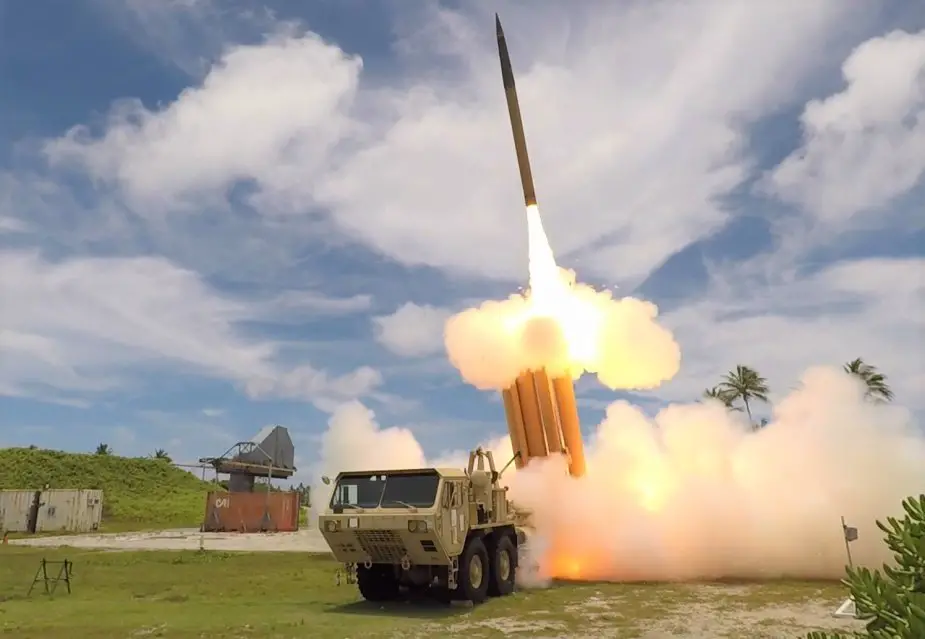Breaking news
Lockheed Martin sells Terminal High Altitude Area Defense THAAD interceptors to Saudi Arabia.
Lockheed Martin, Missiles and Fire Control, Dallas, Texas, is being awarded a $932,836,737 modification to previously-awarded contract HQ0147-17-C-0032 to exercise an option for the production of Terminal High Altitude Area Defense (THAAD) interceptors and associated one-shot devices to support the U.S. government and the Kingdom of Saudi Arabia Foreign Military Sales (FMS) case requirements.

THAAD interceptor launched from Kwajalein Atoll, Marshall Islands, during Flight Test THAAD-23, August 30, 2019 (Picture source: Missile Defense Agency)
The THAAD interceptors and associated one-shot devices will be procured under fixed-price incentive (firm target) contract line items. The value of this contract is increased from $5,366,947,800 to $6,299,784,537. The work will be performed in Dallas, Texas; Sunnyvale, California; Huntsville, Alabama; Camden, Arkansas; and Troy, Alabama, with an expected completion date of April 1, 2026. Fiscal 2020 USG procurement funds in the amount of $327,498,097; and KSA FMS funds in the amount of $605,338,640 are being obligated at time of the award. The Missile Defense Agency, Huntsville, Alabama, is the contracting activity.
Terminal High Altitude Area Defense (THAAD), formerly Theater High Altitude Area Defense, is an American anti-ballistic missile defense system designed to shoot down short-, medium-, and intermediate-range ballistic missiles in their terminal phase (descent or reentry) by intercepting with a hit-to-kill approach. THAAD was developed after the experience of Iraq's Scud missile attacks during the Gulf War in 1991. The THAAD interceptor carries no warhead but relies on its kinetic energy of the impact to destroy the incoming missile. A kinetic energy hit minimizes the risk of exploding conventional-warhead ballistic missiles, and the warhead of nuclear-tipped ballistic missiles will not detonate upon a kinetic energy hit.
Originally a U.S. Army program, THAAD has come under the umbrella of the Missile Defense Agency. The Navy has a similar program, the sea-based Aegis Ballistic Missile Defense System, which also has a land component ("Aegis ashore"). THAAD was originally scheduled for deployment in 2012, but initial deployment took place in May 2008. THAAD has been deployed in Guam, the United Arab Emirates, Israel, Romania, and South Korea.
The vulnerability and lethality analyses of the THAAD have been conducted by the U.S. Army Research Laboratory (ARL). The vulnerability assessment for the THAAD featured an evaluation of the effects of major electromagnetic elements. This included EM interference, EM radiation operations, EM radiation hazards, EM pulse, electrostatic discharge, and lightning effects on components of the THAAD system.
The ARL assessments were designed to determine the THAAD system's growth potential given its tactical design as well as provide survivability analysis against threats such as conventional weapons, chemical weapons, and electronic warfare countermeasures. The data collected from the analyses were used to develop trajectory models for targets and missile as well as target trajectories using infrared scene generation of infrared countermeasures (IRCMs).
The THAAD system is being designed, built, and integrated by Lockheed Martin Missiles and Fire Control acting as a prime contractor. Key subcontractors include Raytheon, Boeing, Aerojet Rocketdyne, Honeywell, BAE Systems, Oshkosh Defense, and MiltonCAT.


























